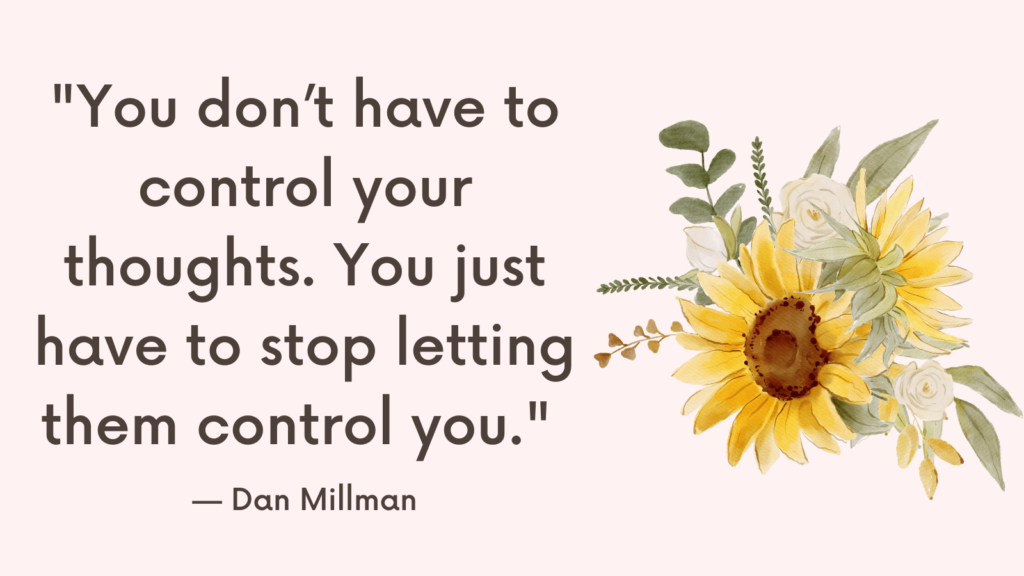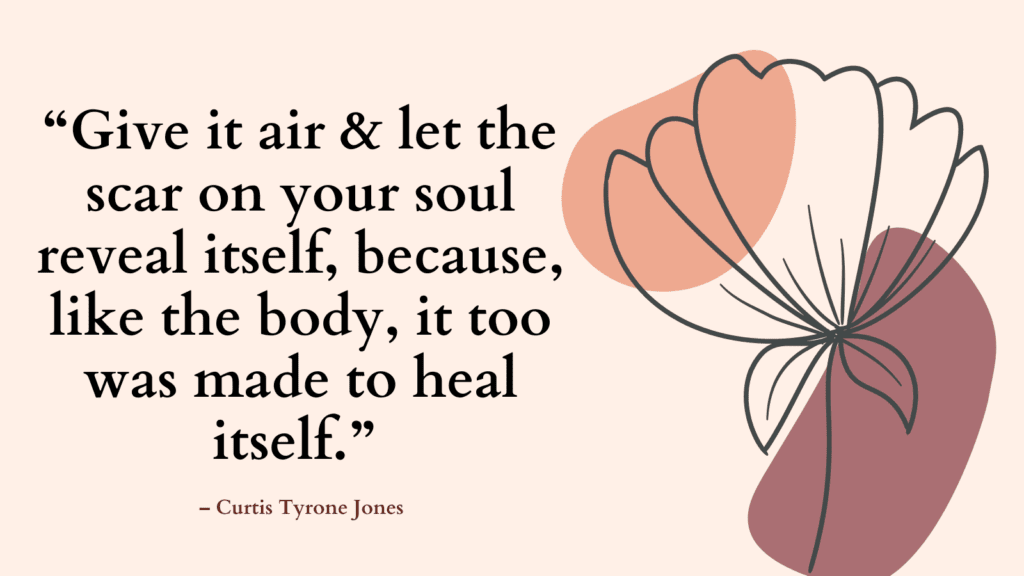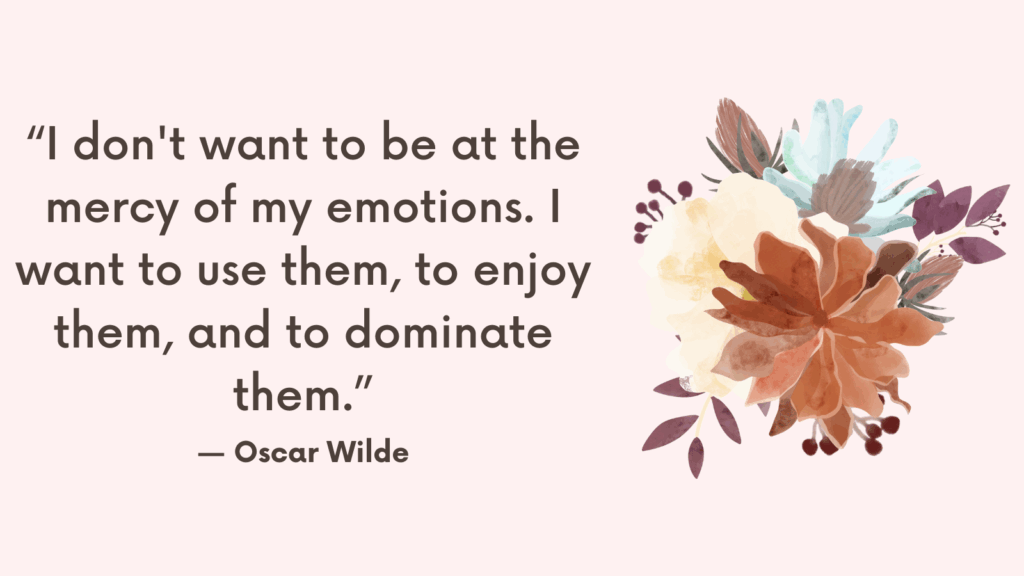In this post, you’re going to learn how to stop “what if” anxiety thinking.
How to Stop “What If” Anxiety Thinking?
Dealing with “what if” anxiety thinking can be challenging and distressing.
The constant worry and anticipation of negative outcomes can significantly impact our mental well-being and quality of life.
However, there are effective strategies that can help individuals overcome this pattern of thinking and regain control over their thoughts.
#1. Identify and Challenge Negative Thoughts
The first step in overcoming “what if” anxiety thinking is to become aware of your negative thoughts.
Start by paying attention to the thoughts that trigger anxiety or worry. When you notice a negative thought, ask yourself if there is evidence to support it.
Often, our anxious thoughts are based on irrational fears or exaggerated scenarios.
Here are some prompts that can help you challenge and reframe your “what if” thinking:
- What evidence do I have to support this “what if” scenario?
- How likely is this “what if” scenario to occur realistically?
- Have I faced similar situations in the past, and how did I handle them?
- What are some alternative perspectives or explanations for this situation?
- Am I catastrophizing or blowing things out of proportion? What would a more balanced perspective look like?
- What are the potential positive outcomes or opportunities that could arise from this situation?
- How would my best friend or someone I trust view this situation? What advice would they give me?
- Can I tolerate some uncertainty and move forward despite the “what ifs”?
Related: Negative Core Beliefs List (& 8 Tips On How To Challenge Them)
#2. Practice Mindfulness Meditation
Mindfulness meditation is a powerful technique for managing anxiety and promoting mental well-being.
By focusing on the present moment and accepting thoughts and feelings without judgment, mindfulness helps to reduce rumination and excessive worry.
Regular practice can help individuals detach from “what if” thoughts, allowing them to regain a sense of calm and control.
The following is an exercise you may try:
1. Find a quiet and comfortable space where you won’t be disturbed.
2. Sit in a relaxed posture, either on a cushion or a chair with your back straight but not rigid.
3. Close your eyes, or if that’s uncomfortable for you, simply soften your gaze and lower your gaze downward.
4. Take a few deep breaths, allowing your body and mind to settle.
5. Begin by bringing your attention to your breath. Notice the sensation of each inhale and exhale. Focus on the rise and fall of your belly or the feeling of air entering and leaving your nose.
6. As you continue breathing, become aware of any “what if” thoughts that arise. Observe them, but try not to engage with them or follow them down a rabbit hole.
7. Instead, gently redirect your attention back to your breath or another focal point, such as the sensation of your body sitting on the chair or the sounds around you.
8. Whenever your mind wanders into “what if” thinking, acknowledge it non-judgmentally and bring your focus back to the present moment.
9. Remember that mindfulness is about cultivating awareness and acceptance of the present moment, including any thoughts or emotions that arise.
10. Practice this mindfulness meditation for at least 5 to 10 minutes initially, gradually increasing the duration as you become more comfortable with the practice.
#3. Create a Worry Time
Allocate a specific time each day to dedicate to worrying.
During this designated “worry time,” allow yourself to fully engage in your anxious thoughts and concerns.
This practice confines worries to a specific period, reducing their interference throughout the day.
After the allotted time, commit to shifting your attention away from worries and onto more positive or productive activities.
Related: What Causes Cognitive Distortions? (+Top 10 Common Cognitive Distortions & How To Challenge Them)
#4. Practice Relaxation Techniques
Engaging in relaxation techniques can help reduce overall anxiety levels and combat “what if” thinking.
Techniques such as deep breathing exercises, progressive muscle relaxation, guided imagery, or yoga can help elicit the relaxation response, promoting a state of calmness and reducing anxious thoughts.
#5. Challenge the Worst-Case Scenario
When caught up in “what if” anxiety thinking, try envisioning the worst-case scenario and then objectively evaluate its likelihood and impact.
Often, individuals realize that their fears are unlikely to materialize or that they possess the resources and resilience to manage any challenges that arise.
Reframing the worst-case scenario as something manageable can help alleviate anxiety and shift focus towards more constructive thinking.
Related: How To Do Thought Work In 3 Simple Steps
#6. Engage in Problem-Solving
If your worries stem from valid concerns, engage in problem-solving techniques to address them effectively.
Break down the problem into smaller, manageable steps and brainstorm possible solutions.
By taking proactive steps toward resolving the issue, you can alleviate anxiety and gain a greater sense of control over the situation.
#7. Seek Support
Talking to a trusted friend, family member, or mental health professional about your worries can provide valuable support and perspective.
Sharing your concerns with others can help validate your experiences and provide alternative viewpoints.
Additionally, a mental health professional can offer evidence-based strategies tailored to your specific needs.
Related: Best 10 Intrusive Thoughts Books
#8. Focus on Self-Care
Taking care of your physical and emotional well-being is essential for managing anxiety.
Prioritize self-care activities such as regular exercise, adequate sleep, healthy eating, and engaging in enjoyable hobbies or activities.
These practices enhance resilience and contribute to overall mental well-being.
#9. Limit Media Consumption
Excessive exposure to news or social media can fuel “what if” anxiety thinking.
Set boundaries on your exposure to distressing or triggering content.
Consider limiting your news intake to specific times of the day and avoid engaging in discussions or online forums that heighten your anxiety.
Instead, focus on reliable sources of information and engage in uplifting and positive content.
#10. Consider Therapy
If anxiety and “what if” thinking significantly impact your daily functioning and well-being, consider seeking professional help.
Cognitive-behavioral therapy (CBT) and other evidence-based therapies can provide effective tools and techniques to challenge and reframe negative thought patterns.
Related: Future Tripping: Top 9 Ways to Avoid Future-Tripping

What Triggers “What If” Anxiety Thinking?
Here are some common triggers that can lead to this type of anxious thinking:
1. Uncertainty
Uncertain situations or outcomes can activate the “what if” anxiety loop.
When you don’t have all the information or control over a situation, your mind tends to fill in the gaps with potential negative scenarios.
For example, if you’re waiting for test results, your mind might generate thoughts like, “What if it’s something serious?”
2. Fear of Failure
The fear of failure can be a significant trigger for “what if” anxiety thinking.
If you have a strong desire to succeed or avoid making mistakes, your mind may constantly generate catastrophic scenarios about potential failures.
For instance, if you’re preparing for a presentation, you might think, “What if I forget everything and embarrass myself?”.
3. Past Traumatic Experiences
Previous traumatic experiences can create a heightened sense of future danger and trigger “what if” anxiety thinking.
If you’ve had a negative or distressing event in the past, your mind may anticipate similar negative outcomes in the future, leading to anxious thoughts.
For example, if you were involved in a car accident, you might constantly worry about future accidents.
4. Perfectionism
Perfectionistic tendencies can contribute to “what if” anxiety thinking.
When you have high standards and an intense fear of making mistakes, your mind may project potential negative outcomes as a way to prevent failure or disappointment.
For instance, if you’re a perfectionist student, you might think, “What if I don’t get an A on this assignment?”.
Related: Letting Go of Perfectionism: Best 20 Tips
5. Catastrophic Thinking
Catastrophic thinking occurs when a person’s thoughts immediately jump to worst-case scenarios.
These extreme thoughts can trigger “what if” anxiety thinking, especially in situations where there’s a perceived threat or danger.
For example, if you hear a loud noise at night, your mind might generate thoughts like, “What if someone has broken into my house?”.
6. Generalized Anxiety Disorder (GAD)
GAD is a mental health condition characterized by excessive worrying and chronic anxiety.
Individuals with GAD often experience persistent “what if” anxiety thinking as a symptom of their condition.
Everyday situations may trigger a cascade of hypothetical scenarios rooted in fear and uncertainty.
7. Social Comparison
Comparing yourself unfavorably to others can also trigger “what if” anxiety thinking.
When you perceive others as more successful, attractive, or accomplished, you may start imagining negative outcomes due to feelings of inadequacy or fear of judgment.
For instance, seeing someone’s vacation photos might lead to thoughts like, “What if I never get to travel anywhere?”.
Related: The Process Of Turning Inward In 6 Simple Steps (Turn FOMO Into JOMO)
8. Media Influence
Media exposure, particularly through news or social media, can contribute to “what if” anxiety thinking.
Constant exposure to negative news stories or sensationalized content can prompt your mind to generate anxious thoughts about potential threats or dangerous situations.
The Difference Between Planning and Catastrophizing
Planning and catastrophizing can look similar on the surface — both involve thinking about the future and preparing for what might happen. But emotionally and mentally, they are worlds apart. One empowers you to take thoughtful action; the other traps you in fear and anxiety.
Planning Is Focused and Purposeful
When you’re planning, your thoughts are organized around real possibilities and solutions. You ask, “What do I need to prepare for, and how can I handle it?” Planning helps you feel more equipped and capable, even in uncertain situations.
Catastrophizing Is Driven by Fear
Catastrophizing spirals into worst-case scenarios without evidence or balance. It sounds like, “What if everything goes wrong and I can’t handle it?” It’s fueled by fear, not logic, and often leaves you feeling helpless or frozen.
Planning Stays Grounded in Likelihood
Planning is based on facts, likelihoods, and realistic assessments. You ask yourself, “What’s most likely to happen, and how can I prepare for that?” It’s rooted in the present, even as it looks ahead.
Catastrophizing Fixates on the Worst Possible Outcome
When you catastrophize, your brain jumps to the least likely — but most terrifying — outcome and convinces you it’s inevitable. This fuels anxiety rather than helping you prepare for what’s actually likely.
Planning Considers Solutions
Planning asks, “If X happens, what’s my next step?” You brainstorm, organize, and think about what would help you cope. It’s a practical process that leads to action.
Catastrophizing Assumes You’ll Collapse
Catastrophizing assumes you’ll fall apart, fail, or never recover. It undermines your resilience and problem-solving ability by convincing you that no matter what happens, you won’t be okay.
Conclusion
Managing “what if” anxiety thinking requires dedication and practice.
By utilizing strategies such as identifying and challenging negative thoughts, practicing mindfulness, allocating worry time, engaging in relaxation techniques, and seeking support, individuals can regain control over their thoughts and reduce anxiety.
Remember that everyone’s journey is unique, and what works for one person may not work for another.
Experiment with different techniques and approaches until you find the ones that resonate with you.
With time and persistence, it is possible to break free from the cycle of “what if” anxiety thinking and cultivate a more positive and balanced mindset.



